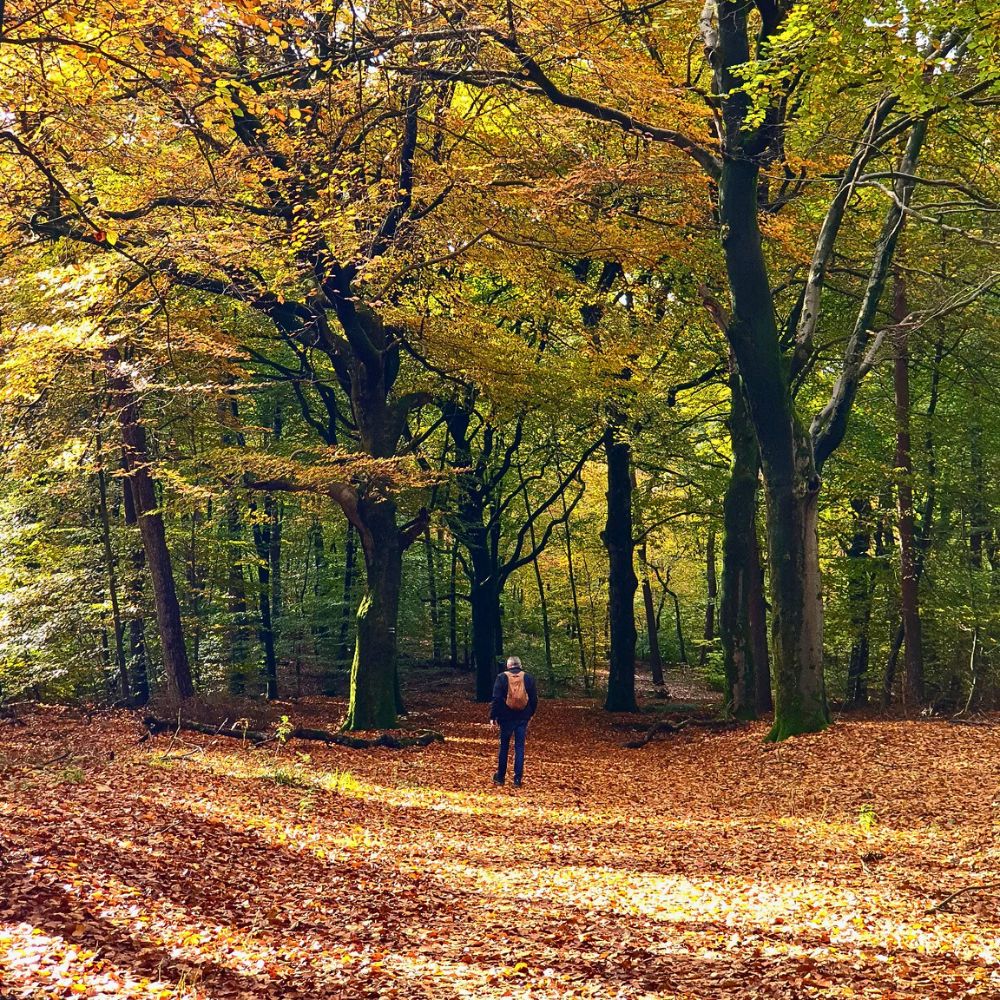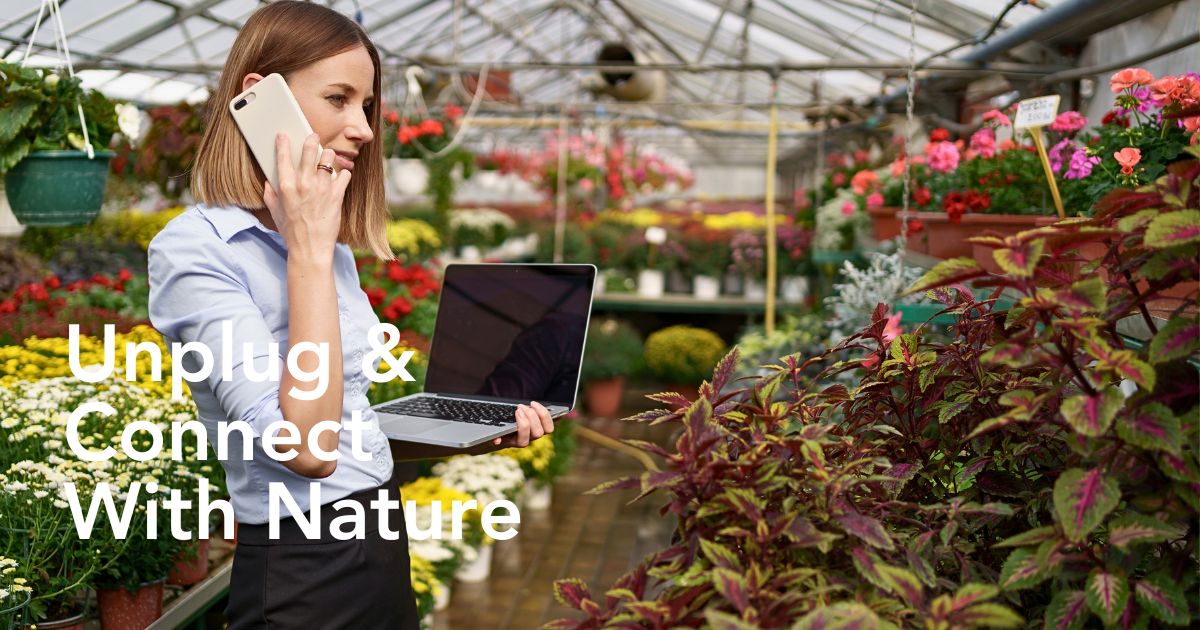This scene has become all too common: You're sitting at dinner with loved ones, but everyone's eyes are glued to their glowing screens. Later, you lie awake scrolling through endless feeds, your mind racing. Sounds familiar? Yes. People have become so tethered to their devices that they are forgetting what it feels like to simply exist – without them.
But nature presents a remedy that has always been there, though quite often ignored. When one decides to step away from their screens – for a while – and into the natural world, a lot happens to them. It brings so many benefits that one often hears of.
Living the Digital Dilemma
In the current age, people’s relationship with technology has gotten complicated. The average person checks their phone anywhere from 80 to over 200 times a day; sometimes even more. Many spend upwards of seven hours staring at glowing screens, just moving from one to the next. They have normalized being constantly connected, always available, perpetually plugged in. No one wants to miss out. And while this is a necessity, it comes at a cost.

The human brain wasn't designed for this level of stimulation. Every notification triggers a small dopamine hit, creating a cycle that keeps one reaching for their phones even when they don't need to. Individuals have trained themselves to seek constant input, and in doing so, they have lost touch with the ability to be present, to notice, and to truly connect with the natural world and people around them, which are all essential.
Relationships Getting Lost in Translation
Technology is paradoxically making people isolated while implying to connect them. People are ‘in touch’ with hundreds of others online, but often feel cut off. Face-to-face interactions have become punctuated by buzzing phones and wandering attention. Partners complain about ‘phubbing’ and families gather in the same room while existing in different digital worlds.

Nature offers a reset button for these. When people hike together, camp under the stars, or simply walk through a park without their phones, they create space for real connection. Without the distraction of screens, conversations get better. Eye contact returns. People really listen instead of waiting for their turn to speak while mentally composing their next social media post.
Studies show couples who spend time together in nature report higher relationship satisfaction. Families who regularly disconnect to explore the outdoors develop stronger bonds. People who take a moment to engage in gardening feel greater satisfaction. The reason for this is that nature demands nothing from one except their presence. There is hardly any performance required, no audience to impress, and no algorithm to feed.

A Sleep Crisis Not Many Talk About
Lately, sleep problems have also peaked. They have practically reached epidemic proportions. And digital devices are major culprits. The blue light from screens suppresses melatonin production, which tricks the human brain into thinking it is still daytime. Nearly everyone has done this before: they have told themselves that they are just checking one (final) more thing on their phone. They only realize they've been scrolling the night away after several hours have passed.

But when one trades their screen time for green time, their circadian rhythms start to normalize. Natural light exposure during the day, especially morning sunlight, helps regulate humans’ internal clocks. Physical activity in nature – be it a gentle walk, tending plants, or taking part in a challenging hike – tires bodies in a healthy way. These promote deeper sleep and rejuvenation.
People who spend regular time outdoors report falling asleep faster and sleeping more soundly. Even just a weekend camping trip can reset disrupted sleep patterns. Without artificial light and devices, human bodies often remember their natural rhythms. People find themselves waking up with the sun, tiring as darkness falls, and sleeping the night away the way humans have for ages.

Finding Mindfulness Where It Lives
Mindfulness is nowadays a catchphrase, complete with apps promising to help one achieve it through – quite ironically – some more screen time. But genuine mindfulness is freely found in nature. Walking through a forest wakes up the senses. You notice the smell of pine, the scent of the flowers, the dew on the grass, the pattern of light through leaves, and the sound of your own breathing. In turn, your mind, which had previously been constantly racing between past worries and future anxieties, settles into the present moment.

This is simply what happens when people remove themselves from the constant noise of digital life. Nature engages what researchers call ‘soft fascination. It captures one’s attention gently, allowing their directed attention systems to rest and recover. In contrast to the demanding pull of social media or work emails, natural environments restore people. Even five minutes of walking among trees, plants, and flowers, watching clouds move, or listening to sea waves can quiet the mental chatter.

Taking the Nature Break
One need not completely disappear into the jungle for weeks to benefit from a digital detox in nature. Start small. Leave your phone at home during a morning walk. Spend a Saturday afternoon at a nearby park with devices turned off. Plan a monthly day trip to somewhere green and commit to being fully present.

The first few minutes might feel uncomfortable. You might experience phantom phone vibrations or the urge to document every beautiful view. That's normal. Sit with that discomfort. It's teaching you something about how dependent you have become on your devices. What comes next matters even more. You loosen the tension you didn't know you were carrying. There come conversations that surprise you with their depth, the sleep that really refreshes you, and the return of your ability to simply be… in the moment.

Nature is where people remember who they are beneath all the digital noise. Not just a nice optional backdrop for their lives. It is where relationships grow roots, where exhausted minds finally rest, where presence replaces performance. All it takes is fully showing up, completely, without digital security blankets. In essence, nature has been waiting patiently. Maybe it is time people paid more attention to it, too, for their good.

Feature image by @helenmichelle.photo. Header image by ArthurHidden.










